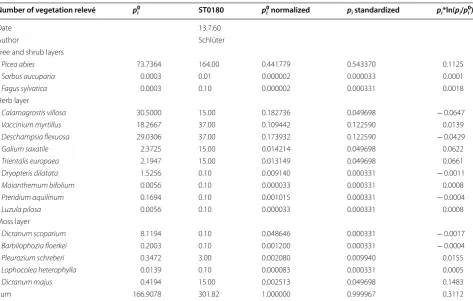Validating the map of current semi-natural ecosystem types in Germany and their upscaling using the Kellerwald-Edersee National Park as an example
Full text
Figure




Related documents
The proposed framework utilises colour deconvolution and the novel CAR network solely based on a single counter- stain channel with superpixels to identify the epithelial re- gions
This built on our previously introduced calculation of the absolute magnitude of ΔψM in intact cells, using time-lapse imaging of the non-quench mode fluorescence
If reinsurers are able to offer coverage to a program not focused on making a profit and riddled with adverse selection it can be assumed that they would be inclined to
These latter effects may be due to a RESPIRATORY DYSKINESIA, involving choreiform movement of the muscles involved in respiration or abnormalities of ventilatory pattern
(4) Which type (or types) of connection are used among the following? Point-to-point, point-to- multipoint. a) Calculate the CRC code. b) Write the T(x) polynomial corresponding
– Nagyvázsony, in silvis montis Kabhegy (VII 1923, coll. Polgár, DE). – Kislőd, 1.6 km S of Farkasgyepű, clearings along the road no. Žíla, OL, herb. Žíla, OL, herb. nessensis ”,
Pacific Coast Producers does its labeling in Lodi, California, at their main
This equation illustrates the two key factors governing the tradeoff for an increased threshold: the loading factor l , which determines the benefits, and the additional profit risk





